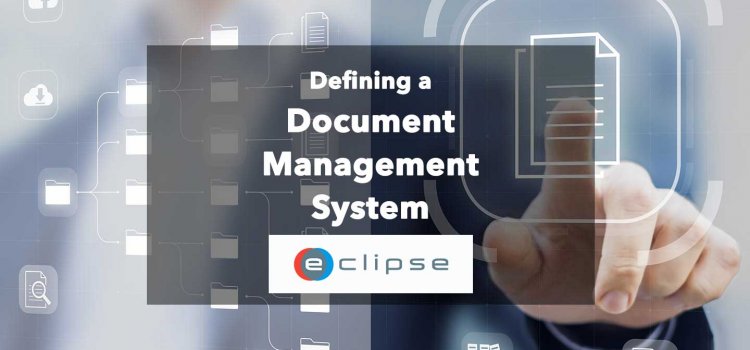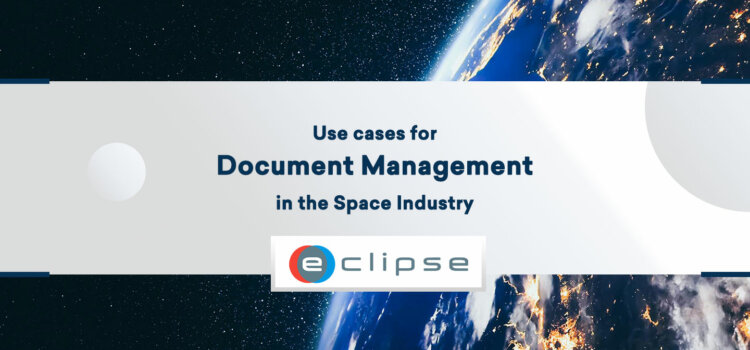
What is a Document Management System?
28 Feb, 2022
A document management system (DMS) is the solution you are looking for if you want to streamline your workflow and optimise your document library. A DMS can supercharge your content management system and document organization, allowing you to track and access your library of content more seamlessly than ever before.
What is a Document Management System?
A document management system (DMS) tracks documents electronically using software rather than tracking documents across folders, spreadsheets, or worse, loose papers. A DMS can be described as a systematic process employed in capturing, storing, and tracking digital documents such as doc, ppt, and PDFs and digital images of hard copy content based on printed or written paper material.
The software controls your document collection by using features such as content capture, repositories, and information retrieval systems to simplify your workflow. In this way, your document management system can store, track, and retrieve documents easily at the click of a button.
Many DMS offer organizational options similar to that of standard physical documents. For example, you can manage storage location settings, impose security measures that limit access control, track audit trails, and control document versions.
Functions of a DMS System
Document management systems provide incredibly convenient controls to document management, essentially creating a “smart” collection of documents for your convenience.
There are some variations when it comes to DMS, but the main functions include:
- Document scanning features
- Document reviewing
- Streamlining documents in a single electronic hub
- Organizing information with metadata such as tags
- User security precautions, including password protection
- Compex searching capabilities
- A variety of communication channels
- Provide advanced backup systems and recovery options
The document management system ultimately functions as an electronic filing cabinet that helps you effortlessly maintain the flow of documentation.
Types of Document Management Systems
Depending on your company’s unique needs, there are two basic document management systems that can offer effective organizational solutions.
Database structure
The database structure is best for managing extensive collections of related information. This digitized record-keeping system acts as a repository for data files and information.
This structure allows users to add new files, insert data into existing files, retrieve data, alter data, delete data, and remove existing files from the database.
A database structure is ideal for managing data in such a way that eliminates redundancy. It also provides data consistency by normalizing each input and output. However, if you’re looking for a document management system that is less complex, the file structure may be a better alternative.
File Structure
On the other hand, a file structure is optimal for managing projects with a high inbound and outbound flow of documents and data that is loosely related or altogether unrelated.
In addition, the file structure allows users to store documents using simple organizational systems such as tags and categories so that information can be easily retrieved.
The file structure is helpful for maintaining an index of documents, which is useful if you want to save time while looking for a particular document. However, there is the potential for data redundancy, and the file structure can present less flexibility than the database structure.

7 Benefits of a Document Management System
The way we do business is adapting to the solutions presented by a digitized workflow – and with good reason. There are so many reasons to adopt an electronic document management system. Here are five excellent benefits to a well-organized DMS.
Security
Keeping your data safe is a breeze with a DMS. There’s no need to worry about documents being damaged or erased, as the system provides automatic backup to your database and files. In addition, some document management systems have web portals that offer encryption to prevent data breaches or interception by nefarious third parties.
There are also role-based user permissions that can differentiate users by levels of security, keeping your documents extra secure.
Configuration Control
The DMS will allow users to maintain revision management as well as the number of versions that may be substituted for each other. As a result, you have the ability to manage the creation, storage, and retrieval of everything in your database or file system.
Additionally, you can control precisely who has the authority to create, review, modify, and delete each document.
Change Control and Revisions
A proactive document management system will meet high standards when it comes to establishing a method of transmitting information between parties. This system will also help to identify and manage the changes made to a document, as well as who authorized the change and when it occurred.
Change control allows you to approve important documents before issuance, review updates, and distribute external documents. This process helps maintain consistency, compliance, and high-quality standards for a reliable flow of information.
Better Collaboration
A document management system allows for more effective collaboration with parties working remotely or scattered across office locations. Team members can view, edit, and comment on documents, eliminating confusion over working versions of documents. These features encourage team members to discuss differing viewpoints, which can result in highly creative solutions.
Finally, an effective DMS can reinforce the sense of connection between your team members. Working virtually can feel isolating, but the ability to collaborate via a robust document management system can bring teams together.
Increased Productivity and Reduced Cost
An excellent DMS can also reduce expenses and promote better usage of time. With a powerful document collaboration method, there’s no need for time-wasting meetings or spending time at the copier to print and mark paper copies for the team.
Using built-in collaboration tools like annotation and commenting features can save precious time for more pressing issues. These same benefits also save costs associated with printing physical materials, such as the cost of ink, paper, and manpower.
Document search is streamlined
Document search is streamlined and centralized in a document management system, making it easy to locate the right document when you need it. The file structure of a DMS can help organize documents by topic or project, while tags and metadata can help refine your search results even more.
Storage centralisation
A DMS system will require storage centralisation, which can be on-premise or off-premise. The advantage of storing all your data in one place is that you can control access, manage documents more effectively and make sure that everyone has the same version of the document. You also don’t have to worry about losing track of files or running out of storage space.
Sectors that can use a DMS
Many sectors have already embraced DMS technologies to provide seamless organization, enhance collaboration, and protect information from being lost or leaked.
- Engineering – One of the biggest challenges faced by engineers managing big projects is efficient collaboration between parties. With a DMS, engineers can streamline ownership of tasks, collaborate across firms, and improve communication efficiency all in one place.
- Government Agencies – With so many documents flowing in and out of agency offices, a suitable DMS can help any government sector efficiently manage resources, expenses, and sensitive information.
- Legal Offices – Law is a field dominated by processing vast amounts of information and making critical decisions based on analysis. Organizing documents and data is key to communicating crucial information and making the right decision for clients.
- Education – The cost, space, and staffing required for education record-keeping can all be mitigated by an effective document management system. Traditional methods can be upgraded to yield savings, a great solution to institutions facing constant funding challenges.
- Hospitality – Since the hospitality industry is all about speed and efficiency, an efficient document management system is a must to fulfil the needs of hotels, restaurants, and other recreational sectors.
- Healthcare – A highly secure DMS is a must for healthcare professionals who must follow statutes for patient privacy. In addition to maintaining important patient information, a document management system offers top-notch security for patient records.
Disadvantages of a Document Management System
In an era that relies so heavily on technology, there are bound to be cybersecurity issues. Luckily, these issues can be easily avoided by proper management of passwords and encryption keys. However, even if hackers can’t manage to break through encryptions on your DMS, there is always the unfortunate possibility of an inside leak.
Additionally, the user-sharing features offered by some document management systems may enable sensitive information to wind up in unintended hands. Access management is key to preventing these issues.
Finally, organizations have to consider the equipment costs of going paperless, or the data migration necessary. Massive volumes of data must be scanned, uploaded, organized, and maintained for a DMS to be effective. The hardware and software needed for shifting could be costly and may require substantial human resources at first. You can get help with this through a data migration service.
Optimise your workflow with a Document Management System
Despite some disadvantages, the benefits of having a digital document management system far outweigh the drawbacks. Given the convenience of managing information using the latest technology, it will likely save your company time, money, and liability in the long run.
The DCCM Module of the ECLIPSE Software Suite provides users with a complete and comprehensive solution for capturing, classifying and managing all types of documents. It has all the features you would expect from a document management system, and more importantly, it is easy to use.
Contact us today to get a free demo of the ECLIPSE Software Suite.




